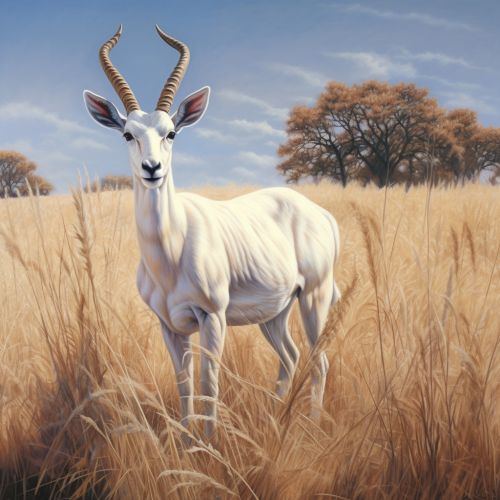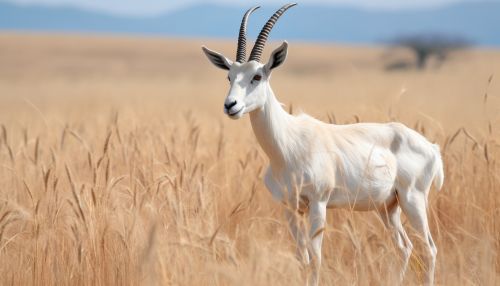White Antelope
Taxonomy and Description
The White Antelope, scientifically known as Antilocapra americana alba, is a rare variant of the pronghorn, a species of artiodactyl mammal indigenous to interior western and central North America. The White Antelope is characterized by its distinctive pale or white coat, which sets it apart from the typical pronghorn that has a brown or tan coloration. This unique coloration is a result of a genetic condition known as leucism, which causes a partial loss of pigmentation in the animal's fur but does not affect the color of the eyes, unlike albinism.


Habitat and Distribution
White Antelopes are found in the same range as the standard pronghorn, which spans from southern Canada to central Mexico. They inhabit a variety of ecosystems including grasslands, deserts, and brushlands. However, due to their conspicuous coloration, White Antelopes are often easier to spot in these environments than their typically colored counterparts.
Behavior and Ecology
White Antelopes exhibit the same behavioral patterns as other pronghorns. They are known for their exceptional speed, being the second-fastest land animal after the cheetah. Pronghorns are also notable for their unique horn structure, which consists of a sheath of keratinous hair that grows over a bony core. This sheath is shed and regrown annually.
Conservation Status
The conservation status of the White Antelope is not separately classified from the standard pronghorn by the IUCN. The pronghorn as a species is currently listed as of Least Concern due to its wide distribution and large population. However, White Antelopes are considered rare due to the low frequency of the leucistic gene in pronghorn populations.
